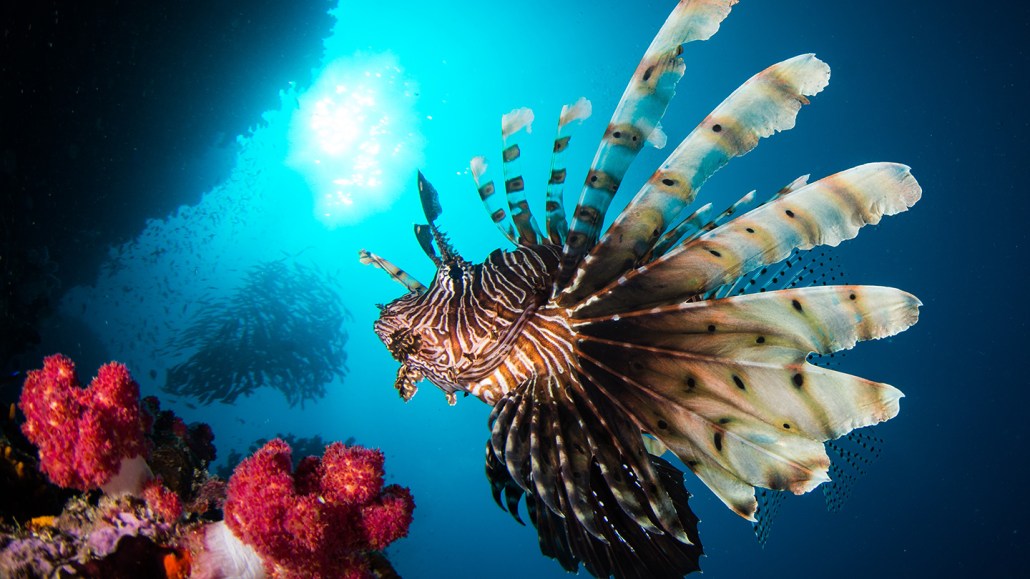
A new study suggests that red lionfish (Pterois volitans) are dogged in pursuing smaller, faster prey.
Sirachai Arunrugstichai/Moment/Getty Images
Lionfish certainly aren’t the fastest predators on the reef, but new research suggests that they can catch swift prey through pure tenacity, gliding slowly in pursuit until the perfect moment to strike.
The finding may help explain part of the lionfish’s impact as an invasive species, and reveal a key hunting strategy that other relatively slow predators use, researchers report August 2 in Proceedings of the Royal Society B.
Festooned with long striped spines, lionfish can make their surreal silhouettes disappear against a coral reef backdrop long enough to stalk and ambush small fish. But the predators also feed in open water where they’re more visible.
Curious about how the predators hunt in plain view, Ashley Peterson, a comparative biomechanist at the University of California, Irvine, and her colleagues placed red lionfish (Pterois volitans) in a tank and recorded them as they chased down a green chromis (Chromis viridis), a small reef fish.
In 14 of the 23 trials, the lionfish successfully gulped down their prey. They also had a high rate of strike success, capturing the chromis in 74 percent of the trials where the lionfish made a strike attempt.
On average, the chromis swam about twice as fast as the lionfish. But many still fell victim to what Peterson and biomechanist Matthew McHenry, also at the University of California, Irvine, call a persistent-predation strategy — the lionfish swim toward a chromis, aiming for its current position, not the direction to intercept its path. And the lionfish’s pursuit is steady and incessant, the team found.
“If they’re interested in something and they want to try to eat it, they just seem to not give up,” Peterson says.
In contrast, the prey fish does bursts of fast swimming along with short pauses.
“Over time, all those pauses add up and allow this lionfish to get closer and closer and closer,” Peterson says. Then the slightest mistake or bit of distraction can doom the prey to the lionfish’s suction-creating jaws.
“This is a good example of ‘slow and steady wins the race,’” says Bridie Allan, a marine ecologist at the University of Otago in Dunedin, New Zealand who was not involved in the research. It would be interesting to see how the unwavering chase plays out in the wild, where there are no spatial restrictions like in a tank, she says.
If lionfish do use the strategy in the wild and prey react similarly, it’s possible that the tactic could contribute to the destructive potential of their invasion in the Caribbean, Western Atlantic and the Mediterranean, where the fish are devouring native ocean animals and disrupting food webs (SN: 7/6/16). But other factors, such as the lionfish’s huge appetite or prolific reproduction, could be more influential on invasiveness.
The persistent-predation strategy may not be exclusive to lionfish, Peterson says. Other predatory fish groups with sluggish swimmers — like straw-shaped trumpetfish (Aulostomus spp.) — could also use it.
In a natural setting, prey that are dodging lionfish and other slow swimmers may have more places to hide, Peterson says. But there are inherent risks in a busy, distracting environment too. “If you’re near a reef or up against the coral, you could get pinned if you aren’t really paying attention,” she says. That’s when determined and hungry slowpokes may have the upper hand.





